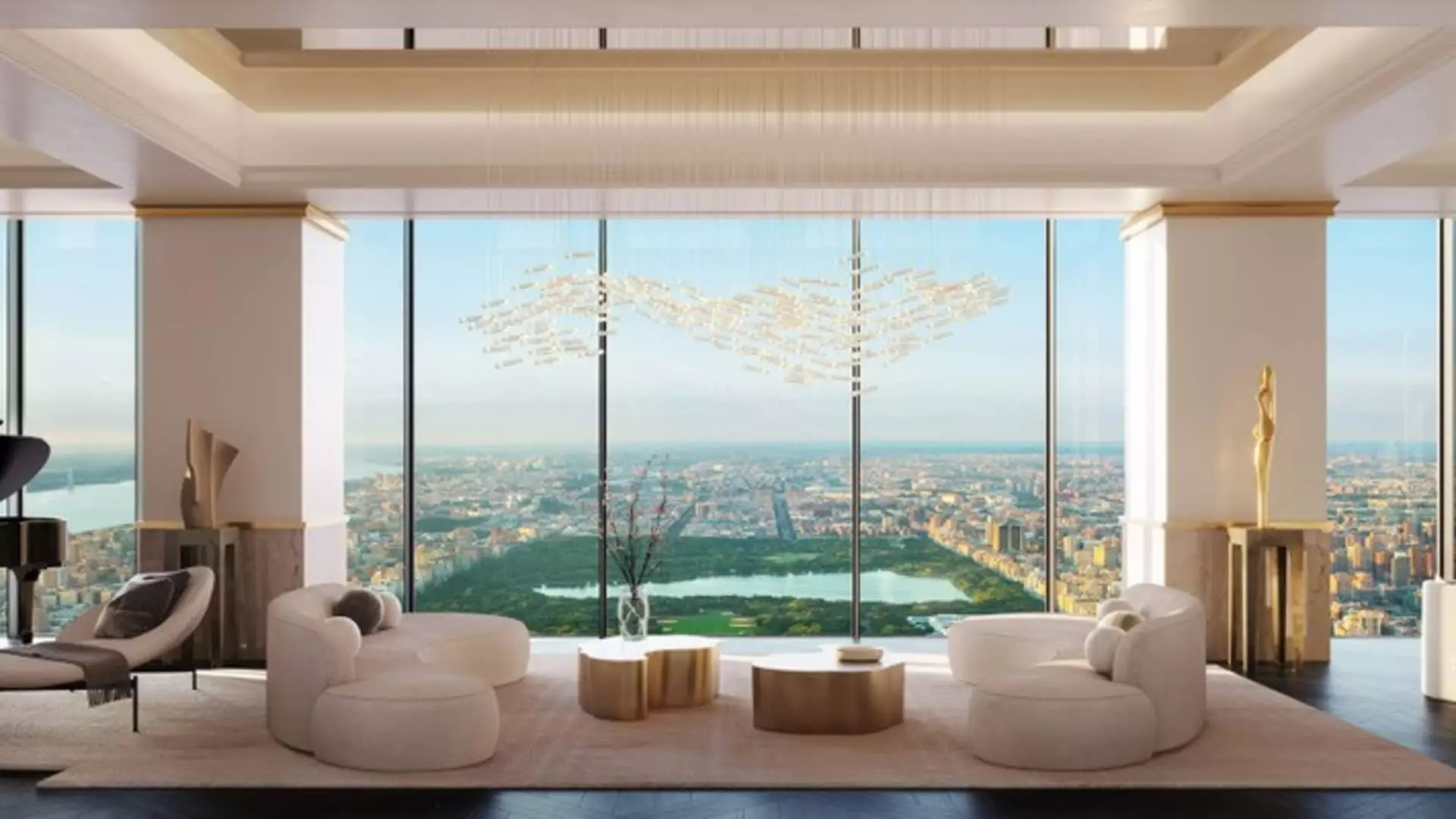In a striking juxtaposition against the roaring waves of financial panic, a $110 million penthouse listing in Manhattan has emerged as the beacon of opulence amid the storm. The Dow Jones Industrial Average recently experienced a staggering plunge, shedding over 4% in a single day, a shockwave that rattled the global economic landscape. Yet, in the midst of this chaos, luxury real estate seems to be boasting an aura of invincibility. Clearly, the wealthy elite are developing an immunity to the broader market volatility that affects the average American. Are we witnessing a filtered reality where the rich remain unaffected, while the rest of the population endures economic uncertainty?
It’s astonishing to see high-value real estate thrive during a period when everyday consumers grapple with soaring inflation and a looming recession. The penthouse located at the upper echelons of the landmark Steinway Tower is not just a property; it’s a testament to a world that often exists parallel to that of the middle class. In the eyes of brokers like Nikki Field of Sotheby’s International Realty, the upper echelon of society is emotionally detached from the jittery headlines populating our newsfeeds. Their fixation lies in building meticulously curated portfolios consisting of architectural marvels rather than worrying about stock market downturns. In this sense, the $110 million penthouse becomes more than a home; it symbolizes a fortress of privilege resistant to the storms of economic distress.
Luxury or Elitism? The Price Tag Dilemma
One cannot ignore the audacity of such a listing—the simple act of advertising a penthouse that costs 110 million exploratory dollars while millions of citizens face the clutches of financial struggle raises inevitable questions about equity in society. This quadplex—which boasts a massive 11,480 square feet filled with lavish amenities and sweeping views of Central Park—is positioned almost as a critique of societal priorities. While record sales in the nine-figure range are becoming a more common occurrence, it’s essential to probe deeper into what these listings represent.
Recent data suggests that the market for homes over $100 million is not merely a gimmick but a burgeoning sector with an average of four such sales per year, demonstrating a distinct demand for ultra-luxury properties. That said, even within this niche, you see a conflict—where hyper-luxury and accessibility stand at odds. Most Americans harbor dreams of homeownership, of having a space that radiates security. By placing such exorbitant values on properties, society might inadvertently relegate aspirations of homeownership to the realm of fantasy for many, further entrenching social stratification.
The Shifting Dynamics of the Luxury Market
It’s undeniable that brokers involved in ultra-prime real estate are bullish despite wider market hesitancies. Yet, a deeper look at the market dynamics reveals a growing schism. While some luxury buyers flutter at the high end, others are reconsidering their investments due to the instability that flourishes beyond their glittering towers. There’s an element of paradox here: where once ultra-high-net-worth individuals operated in a realm untouched by economic variables, they now find themselves making calculated decisions based on ‘what’s next’— evaluating the possible repercussions of tariff strategies on the real estate market.
Interestingly, the luxury market has witnessed some surprising growth despite overall market anxiety. Recent contracts signed for properties priced above $4 million in Manhattan show a 13.8% increase in a turbulent week, defying expectations. However, that growth is not uniform across the luxury spectrum; it is peppered with caution and more stringent expectations. Residents of the $20 million-plus tier seem unperturbed—prioritizing value imbued in rarity and unique attributes of properties rather than being entirely price-driven.
The Future of Luxury Real Estate: A Dichotomy of Confidence and Caution
As an observer immersed in the complexities of contemporary economics, the juxtaposition of soaring property values and underlying instability raises profound questions about the sustainability of this luxury real estate boom. The willingness of elite buyers to pivot their investments toward tangible assets like real estate propels a sense of resilience, yet one cannot help but feel the allure of speculation looming nearby.
As buyers become more strategic, opting for all-cash offers and flexible terms, the marketplace is undoubtedly shifting. Gone are the days where overpriced listings could sit idly, awaiting buyers who pay any price for exclusivity. While the wealthy maneuver to keep their investments viable, the worry remains: will the broader market turbulence eventually catch up to even the most insulated segments of luxury real estate?
It’s an intriguing—and troubling—conundrum to ponder, and it highlights a crucial lesson: wealth can function like a double-edged sword, providing security while simultaneously eroding the universality of the concept of a home. Where will real estate as a sanctuary stand if the divide between the haves and have-nots continues to widen? It may well take more than a penthouse to shift the narrative on societal equity moving forward.


Leave a Reply